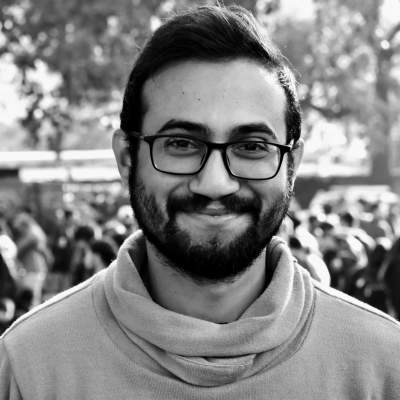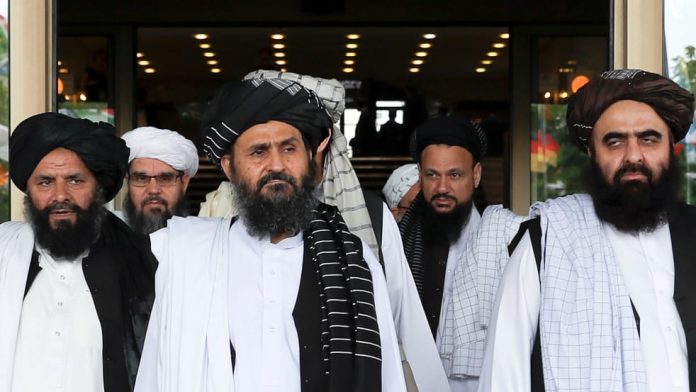This comes in the wake of ghastly attack in Dasht-e-Barchi area of Kabul two weeks ago, a cold-blooded attempt to convert a maternity ward into a charnel house, resulting in deaths of new-borns and mothers. This has further confounded the labyrinthine equations in Afghanistan, with peace deal in the process and now signing of political agreement between Ghani and Abdullah. Taliban were quick to deny any involvement in the attack and also condemned it via its spokesman Zabiullah Mujahid. This is not to say that they are not capable of staging such an attack or their assurances to be taken at face value, but Taliban might just be right this time. This however does not absolve them of their past actions, just like all other players in the Afghan theatre. The same day a funeral gathering was attacked in Nangarhar, claimed by the Islamic State (K). Surprisingly no group claimed responsibility for attack on the Hospital, not because of the macabre details of the incident, inhumane by the attacker’s own standards, but due to strategic dividends it attributes by remaining incommunicative. All dots when connected, points out to ISIS(K) and its very likely that they carried out these gruesome executions. ISIS-K would be most affected if clauses of peace deal are actually observed by all the parties.
Again, this is not to say that Afghan forces were involved, but complete withdrawal of NATO troops from Afghanistan as mentioned in the U.S.-Taliban Deal also does prepare a very unfavourable ground for NDS and Afghan Government. For all the adjectives that can be used for Taliban, it is almost certain that they are not scatter-brained. It is very unconvincing that they would derail the process which gives them considerable authority backed by legitimacy, a thing they have been languishing for almost two decades now. Taliban is a reality and not going anywhere, so coming to the question whether we should be talking to Taliban, the answer regrettably or otherwise is a ‘Yes’.
The chains of Command
What makes Taliban such a recurring force in South Asia rests on their tactical adaptability that they deliberately or unconsciously imported. Their strength lies in their polycentric structure as enunciated by Antonio Giustozzi in his book ‘Taliban at War 2001-2018’. The USP of polycentrism i.e. multiple chains of command is their resistive capability to endure sophisticated attacks backed by technology, highly effective in the face of drones.
The Taliban rely upon ‘Loy Mahazes’ under the leadership of various able commanders, who for many years have been given free hand to recruit and accept foreign donations. These mahazes work under the authority of Supreme Council, also known as Quetta Shura. Taliban on the contrary claim that their council resides in Afghanistan. This structure however had had its limitations with the coming of two new powerful shuras- Miran Shah Shura (better known as Haqqani Network, the champions of Asymmetric warfare) and Peshawar Shura. These shuras many times confronted with each other related to authority over an area or rift between ‘governors’ appointed by Quetta and ‘Nizami Massuleen’ (military representative) appointed by other shuras. Mahaz commanders sometimes took total authority in their hands, to the dismay of leadership. These were some great issues which would have threatened the very survival of Taliban, but each time it was saved by intervention of some charismatic leadership and diplomacy, the likes of Mullah Baradar, who now leads Doha Peace negotiations and Mullah Akhtar Mansoor, the deceased former Amir of Taliban.
The ‘Layeha’:
The fighters under the Mahaz need to follow certain guidelines which also happen to be set of rules known as ‘Layeha’ (Jihadi code of conduct). This 2010 version gives a detailed picture of what Taliban utopia looks like, at least on paper. This is their answer to the world community which label them of being incapable to rule within a framework of internationally accepted principles. The various detailed sections try to give a semblance of legitimacy to their endeavour. They deal with different topics like treatment meted out to surrendering enemy forces, treatment of prisoners (releasing prisoner for money is strictly forbidden), spies (getting confession by force is invalid), concerning enemy logisticians, booty, hierarchy of obedience, and different commissions : Military commission being the most important amongst others like education, health, private companies and NGOs etc. Section-5 dealing with ‘Booty’ (property of so called ‘infidels’ seized during battle) deserves a special attention here. According to rules, one-fifth of booty should go to provincial official (appointed by leadership), while four-fifth to be distributed amongst Mujahideen who were on frontline. If money and property is seized without a fight, then it qualifies as ‘Beit-ul Maal’ or public property not to be distributed among fighters. On the other side this also hints at the deliberate offensive carried out by fighters sometimes.
Stalwarts
Any discussion on Taliban would never present a clear picture unless talked about their leaders, who have led the struggle amidst American strikes successfully for over twenty years. Mullah Abdul Ghani Baradar, who mediated between rival factions of Mullah Mansoor and Mullah Zakir and rescued the group from crumbling, now leads peace talks in Qatar. He was arrested by Pakistani establishment in 2010, released a year back. Many analysts doubt him being a CIA or ISI asset, true or not his participation is crucial if peace has to see light of the day in Afghanistan. He and Mullah Omar fought together in Soviet Jihad and it is said he rode Omar on a motorcycle during American assault and safely got him out of Kandahar. Number 2 in the political office of Taliban is Sher Mohammed Stanakzai, fluent in five languages and studied at military academy in Dehradun, India. Others include Khairullah Khairkhwa, former Guantanamo prisoner, known for his close links with Al-Qaeda and Iran. He is part of Taliban five (a controversial prisoner swap ordered by Obama administration) all of which are members of political office in Qatar. This is also a tactical and symbolic stand in front of United States that Taliban is not negotiating from position of weakness. However, the absence of Mullah Zakir, a great military commander who had grudges against leadership of Akhtar Mansur and Baradar, from the scene is not a positive sign for Peace in Afghanistan. Qari Baryal, who parted ways from Taliban leadsership has established his own ‘Shura of the North’. Haqqanis however are on board with negotiations, corroborated by pictutes of Anas Haqqani (brother of Sirajjudin Haqqani) in Qatar Intercontinental hotel. He was released few months back by NDS possibly on behest of Khalilzad (U.S Special Representative for Afghanistan Reconciliation).
The Missing Link:
Pakistan and United States, two major foreign stakeholders in Afghanistan, have been very myopic in keeping Iran out of major discussions. It is to underscore the fact that the most sophisticated, best trained and equipped faction of Taliban now, is ‘Mashhad front’, exclusively funded by Iran and IRGC. Iran now also funds Qari Baryal’s ‘Shura of North’ along with Russia. Taliban’s dealing with Russia tell about their growing sense of pragmatism. Another country which has kept itself at the margins in the entire negotiations is India. It has become rational for India to jettison their moral high ground which they have maintained by not directly talking to Taliban. It supported Northern Alliance; whose warlords were no less barbarous than the then Taliban. India has a lot to offer at the table but it needs a strong will and leadership to contribute to Peace in the region. Pashtuns in the Afghan belt are inspired by Deobandi Islam, which originated in India. Ironically it was a revivalist religious movement here, far from any sense of extremism. Taliban often calls a concoction of Pashtunwali, Hanafi legal tradition, and some decontextualized Quranic Verses as True Islam. India, being second largest Muslim populated country should take a lead in exhibiting Sufi elements, but of course first correcting its image of late in the Muslim world. The soft power investments in Afghanistan, be it via Bollywood or construction activities resulted in goodwill and bonhomie and now its high time to capitalise on that. India enjoys better relations with Iran than United States or Pakistan. It can work tremendously to put Iran’s Taliban policy on a right trajectory and also counter the ‘Strategic depth’ policy of Pakistan- one of the causes for mayhem in South Asia. The emergence of Kashmir based groups viz. Lashkar-e-Taiba and Jaish-e-Mohammad in Eastern Afghanistan, working alongside Taliban should give them a push.
The views and opinions expressed in this article are those of the author.

The author is currently pursuing his Masters in International Relations and Area Studies at Jawaharlal Nehru University, New Delhi.


